
English for Life in the UK – Wildlife in the UK
An introduction to this podcast and a summary of our first session on the history of migration into the U.K.
Read the transcript
Mark
Hello, and welcome to the podcast of English for Life in the UK. In this podcast we try to help you to improve your English by listening to native speakers talking about different subjects and we also hope that you learn something about life in this country. Now last week, we were talking about the seasons - the seasons and the weather - and we said then, that we'd just started the spring here. We're recording this at the beginning of March, and so it's the spring, and that's the time when flowers and trees begin to come out, so we thought that this time we'd talk a bit about that - a bit about nature and particularly, about wildlife in the UK.
So, by "wildlife" we mean: anything that is ... that lives or grows, in this country, naturally; that is, without humans having to do anything for them. So we'll talk a bit about wild animals, about birds, plants, trees, wild flowers - that kind of thing.
Now, there are an awful lot of these, so we can't cover everything. So we are going to talk a little bit about the kind of wildlife that we know in different parts of the UK.
So the three of us are all here in Yorkshire, in the north of England, but Sheena and Christine are also going to talk about some other parts of the country, as well, and what's different and choose some other things from there.
Just a reminder that we do produce a transcript for each episode and that has on it some images, some pictures - so if you are able to get that, the information is at the end of the episode as to how to get hold of those. But we will also do our best to describe in a brief way some of the things we're talking about, in case you can't see the images. I'm sure you could also Google them as well and find pictures of the things we are talking about.
As I said, I'm joined by Christine and Sheena. So Christine, how are you today?
Christine
I'm very well, Mark. Very well. I've been hiding indoors, cooking today, I've been trying ... I made flapjacks for the very first time and I'm feeling rather proud.
Mark
You'd better describe the flapjack.
Christine
Well, it's like a biscuit - quite a large, chunky biscuit - made of oats mainly, like porridge oats. That's what I made and ... I put dates .. in fact, I made it with date syrup. Very nice.
Mark
Lovely. Sheena - how are you?
Sheena
I'm fine, thank you Mark. I haven't been baking today but I did do my art course. Every Friday morning, I do an art course and today was about "self-portraits" so it was interesting - and quite tough.
Mark
Lovely - lovely - I won't suggest we put your self-portrait on the website. (Mark laughs).
Sheena
Please - NO!
Mark
Let me kick things off, then - that means, "get started" - and I'm just going to talk a little about the wildlife that I see around me here, in Yorkshire, and that I particularly like.
If I start with wild animals: there's not a lot of those, that I see here, but I do occasionally see hedgehogs. So a hedgehog is ... has got spikes on its back and rolls itself up in a ball, for protection. I see mice and rats. Sometimes, in my garden we get grey squirrels - lots of them in our garden. So, grey squirrels ... it's like a grey mouse-like creature, but with a long, bushy tale. I do also see foxes occasionally. And although I live on the edge of a town, increasingly, in this country, you do get foxes right in the middle of cities and towns, as well.
Birds - we have a - we put a feeder up in our garden to attract the birds and we get lots. We get lots of tits - that's blue tits, great tits, coal tits and long-tailed tits - so those are small birds. The blue tits [are] blue and yellow; the long-tailed tits - which as you can see, from the name - have long, wispy tails. We get lots of bullfinches - those ... the male bullfinches have a bright pink kind of breast and we get lots of goldfinches, which I think are my favourites - they're a beautiful yellow and gold colour with little bits of red and white, as well
I do occasionally hear an owl but I haven't actually seen an owl, but I do hear them occasionally, in and around my house.
(5 minutes:20 seconds)
Christine
I'm lucky enough to see a barn owl very regularly from my window. There is a barn owl's nest, just nearby, and I think the barn owls have been very hungry, this year, particularly when there was snow on the ground. Normally, they would hunt at night, but we saw them out in the daylight - very large, very pale coloured birds - very impressive.
Sheena
And is it true, Christine - that owls - you can't hear them, that they fly silently? Is that true of barn owls?
Christine
Oh! I don't know, Sheena, I don't know - I certainly haven't heard it flying.
Sheena
Right! I think they move very silent... you know, quietly, so that the mice and the little animals are not aware of them.
Christine
I wouldn't ... I'm not surprised to hear that, but I didn't know that.
Mark
So let me say a little bit about trees and flowers. So, where I live, I .. within a very short walk, I'm in quite a large wood and the trees there are oak trees. There are lots of oak trees in the United Kingdom. In fact, if you go back in history, a large part of the United Kingdom was covered in trees and the oaks - I think - were the most common. There are beech trees, sycamore trees, horse chestnut trees; those are the ones that produce what are called "conkers" - a conker is like a large nut that falls off the trees in the autumn.
And in our front garden we have a beautiful willow tree. It's called a "weeping willow" because the branches hang right down and it's almost as if it's crying. "Weeping" is another word for "crying".
And then, quickly, one or two flowers: we get snowdrops in the woods where I go and walk there as well. There are some wild daffodils - those are very common yellow flowers, with quite a large head to them. Foxgloves, which is a beautiful wild flower which as the name suggests, is a bit like, almost looks like, a glove. It's a kind of pinky-purple colour - a rather beautiful one. And then finally, bluebells; and I need to say that, because in our woods, we get beautiful bluebells. That's later, at the ..later in the spring, the kind of April, May period, that bluebells come out, and as the name suggests, they are the flowers of blue and they are in the shape of bells.
Christine
There's an expression which is often used, which is "a carpet of blue bells" - because when the bluebells come out, it's as though the whole woods - the floor of the woods - has been covered in a blue carpet. It's beautiful. And so we have woods here with bluebells and we have wild garlic, as well, so it smells like garlic and it's got green leaves and pretty white flowers - so that's quite common, here.
Mark
Sheena - what about you ... around you?
(8: 53)
Sheena
The one thing I have here, in my garden, that you haven't mentioned, is a lot of sparrows. This last summer - because of the erm...the lockdown - because everything was quieter, we had more birds than we've ever had before, including lots and lots of sparrows' nests. We had about more than 20 sparrows in the garden and we still have them now - so, even though they're not a very exotic bird - they're brown and speckled and small. The other thing I like in our garden is here, in Yorkshire, is that we have some wrens which are a very tiny, little bird.
Again, I'm afraid, not very exotic to look at - a sort of nice, rusty-brown colour, though, very tiny, with a tail: a small, short tail that sticks up in the air, so that's how I can always recognise them. And then the other birds we have a lot here: we do have starlings and blackbirds. And the blackbirds regularly breed in our garden here, as well. We have male and female blackbirds and what I like about them is to watch them in the garden because they stamp on the grass. I don't know whether your birds do this, Mark. So they stamp on the grass, so it appears as if it's raining - so the worms will come up.
Mark
So Sheena - tell us about another part of the country - what might be different there or what you've seen there.
Sheena
Well - another part of the country that I go to quite regularly - is Shropshire and Shropshire is on the border with Wales. It's in the Midlands, and it's on the border with Wales. It's very much a farming county really, with little market towns around. So the towns are not as big as we have in West Yorkshire.
So, the thing I was always surprised about in Shropshire, was the amount of badgers. There seemed to be badgers everywhere. If I drove down there on a Friday evening, at the side of the road you would often see the badgers. They're about the size of a dog and they have black and white stripes. So it's something that I've always associated with the countryside. The other animals that we have there, that we can see from the house, which I don't have here, are hares - brown hares. They disappeared for some time: I think they were hunted. But, we had "foot and mouth" [disease], I think, maybe, ten years ago - the "foot and mouth" crisis - and the country .... people were no longer walking in the countryside, and the hares have reappeared and they're doing very well now.
(11:58)
Christine
You say "foot and mouth" Sheena - can you explain what that is?
Sheena
Oh, sorry! Yes - it was a disease that affected cattle and I think it was passed by their hooves, by ...on their feet, and presumably, through their breath as well - if it was called "foot and mouth" - but a terrible crisis, as well, where the farms had to all be gated and shut. You weren't allowed to go anywhere near the farms or walk through the area. A lot of the cattle had to be killed.
Christine
I remember it well - that was when we got deer. [They] Came back into the woods here. I didn't see deer before the "foot and mouth" crisis; but ever since then, there have been roe deer in the woods here.
Sheena
Right. I think it was because the countryside was quieter, that these animals began to emerge again. And the other birds that I used to see a lot in Shropshire that I didn't see so much here, but I think we see them more, now - was buzzards. There were always a lot more buzzards, flying round in the skies - big, majestic birds, often on posts and at the side of the the roads, you could see them, they were very, very common. What's changed there now is red kites have been reintroduced to the area - so where once there was the buzzards flying, these dark birds - now you can often see red kites who look slightly different, because .. as the name suggests, they look quite red at times when the sun catches them - and the big difference is that they have a forked tail - so you can see the difference.
Mark
Perhaps - it’s worth just saying that the general name that we use for that type of bird - we call them "birds of prey" and I think - I don't know, technically, what the definition of a bird of prey is - but they are large and they feed on other animals. Their prey is very often mice and even rabbits and larger animals, and fish, actually, as well, for some of them, as well. But certainly, buzzards and red kites are examples of birds of prey.
Christine
Yeah - that''s interesting - you're talking about birds of prey - and I'm going to take you up to Scotland for a bit - because in Scotland we have birds of prey as well - and particularly, the golden eagle which is the largest bird of prey in the UK. They're not common but there are places where you can expect to see them. They will catch, as well as mice, they'll catch larger animals, too - rabbits; and there are fish eagles in Scotland as well. And they do - they catch fish - I've seen them.
Scotland is quite a large country and there are very different parts of Scotland but a lot of Scotland is quite wild and high ground - mountains - and there, you see red deer. That's what Scotland is known for - these quite large deer - and the males have impressive horns. Red deer - the name tells you the colour - of course, not bright red, but a distinct reddish brown.
And interestingly, the squirrels in Scotland - most of Scotland - they're also red. They're the original, native UK squirrel - the red squirrel - and it was, I don't know how many hundreds of years ago, but the grey squirrels came in and the red squirrels have now been pushed out, to just a few places in the country, but quite a lot in Scotland. There are some other animals that are typically Scottish, wild animals. There is actually a wild cat. They're very rare - I've never seen one.
(16:12)
Sheena
I have been very lucky. When I was on the Isle of Mull in Scotland - I saw three wild cats.
Christine
Wow - that's so unusual - they're very rare. They are like cats - they look like tabby cats - that's the word for the grey and black striped cat - they look like that but they're fierce and they're very shy. So they used to be quite common in Scotland - but they're not now, it's only a few lucky people - like Sheena - who ever get to see them. The landscape, as I said, is a bit wilder. A lot of it is moorland - countryside without trees in it - with just peat bogs and also, heather. That's a flower - or it's a shrub, with a purple or white flower and in Scotland you often see whole hillsides covered in heather and at certain times of the year, when the heather's blooming, it really is quite beautiful.
Mark
We do get heather here in Yorkshire as well. You're right. It is very beautiful.
Christine
We do indeed - a white heather is considered [to bring] "good luck".
Mark
And that's later in the year - isn't it? that's kind of August, September time, I would say.
Christine
It is - I think so. Yes - later in the year. The trees you get in Scotland are very similar to the trees here. But also - in the uplands and the wilder parts, there's Scots pines which are a kind of conifer, an ever green tree, with a tall, bare trunk, and the branches with the needles, are all at the top - at the top of the tree - quite distinctive looking: Scots pines.
Also in Scotland, I see hares, which I don't see here. I also see badgers and foxes - there are also - I sometimes see them here - other small mammals called stoats and weasels. Which, actually, I have seen here, in Yorkshire, but I am much more likely to see them in Scotland.
Mark
What do they look like, Christine?
Christine
Well, I would say they're like a mouse that's been stretched because they have a long body and quite pointed noses and ears. They have a relative, called the pine marten, which is a much, much larger animal. They're quite rare in the UK, but you do get them in Scotland.
Of course, the wild flower that Scotland is known for is the thistle. That's one of the emblems of Scotland, but they usually have a purple flower, The petals sprout up from a green "bowl", and they often have prickles, so that you could hurt yourself on them. Thistles.
Now often, when I go to Scotland, I go to the coast. And I actually go out in my boat - I have a sea kayak - so, I actually go out on the sea or paddle along the coast anyway and there, I see quite different animals and birds and fish, of course. There are many, many different sea birds that come. They live out at sea but they come to the cliffs, they come to land, to breed, in the spring time, so they're only there for a few short months - but when they're there, they are spectacular, because they come in huge numbers. I'm going to say the names of some of these birds, but I'm not going to describe them all to you. One's called auks, and there are guillemots, razorbills and puffins and I am going to describe the puffin to you, because it is such a funny-looking bird. It is a little black and white bird, with orange, webbed feet and a big beak that's stripy - it's very funny.
I only see them in the late spring, early summer, when they come ... they come to land. There're also skuas and terns and then, the great - the largest seabird of all: gannets.
(20:41)
As I was brought up as a child, I just thought they were all "sea gulls", because that's the common name for sea birds - sea gulls. It's only been as I've spent more time at sea, in my sea kayak, that I have learnt to tell the difference between them all.
As well as birds in the sea, of course, there are animals that live in the sea. There are seals, so we have seals in many of the waters around the coast of the United Kingdom.
They're big actually - they're bigger than most dogs but, of course, they don't look like dogs. They're just round long, round balloons - is what they look like - and they're brilliant swimmers and then, when they come on to land, they're quite clumsy - they sort of lollop on to the land and they're browny or grey-looking. Usually, all you see is just their head popping out of the water.
If you're lucky, you will see otters. They're animals - they too have long bodies and tails, like the stoats and weasels and pine martens but they are at one in the water - they swim and they fish - they catch fish - if you're very ... they're shy animals and they're difficult to spot, but if you're lucky, you may see them playing in the seaweed.
You can quite often see jelly fish and there are many different kinds of very beautiful ... just like blobs of jelly, really; but you can see them being ... they're washed around in the sea - some of them - a few of them, have long tentacles below them and a few of them are poisonous.
We also have porpoises and dolphins - so, they look ... they leap out of the water, you can see them. And there are whales - there are whales and sharks - not many of them, and they don't ... but in the very north - or the very west - in the very wild places - you sometimes see whales, more so in the winter. We have orca, in the northern isles, near Orkney and Shetland, they're killer whales; so, they're those black and white creatures.
And finally, in Scotland - Scotland, of course, is known for salmon and also trout. They're fish which live most in their life in the sea but then, when it's time to breed, they swim inland - they swim up the rivers and breed inland, in lochs. So Scotland's known for its salmon.
Mark
Very interesting, Christine. A lot ... some of those things of course are common throughout the United Kingdom, in the coastal areas, although I am sure quite a lot of that sea life is probably more common off the Scottish coast than it is elsewhere. Although even recently, there was a whale that came up the river Thames into London, so you can get some of that wildlife, even in other parts of this country, as well.
Christine
That's true - what you say is quite true, Mark. I mean, I have seen just this last year I saw puffins and the guillemots and razorbills I mentioned, in Yorkshire, on the Yorkshire coast, so you don't have to go as far as Scotland to see them.
(Music) (24:38)
Language Support
Mark
This is the part of the podcast where I choose a few words and phrases from the episode and explain them. So, today, because we were talking about wildlife, we often wanted to express quantities or amounts of wildlife, without using precise numbers. So I'm going to talk to you about some of the different ways in which you can do that.
So we, for example, didn't talk about there being "100 sparrows" in the garden - we said "there were lots of sparrows in the garden" - or you can say "a lot of ..." - you can either use "a lot of" or just "lots of ... ". Now it's important that you use "of" with "lots" - so it has to be "lots of", or "a lot of ...".
And there are other expressions like that.
So you can talk about "plenty of" - you can talk about : "a great deal of" - "a large number of" or you could say, "a huge number of"
Now Christine, in fact, said of the seagulls - "they came in huge numbers".
Now, she didn't have to use "of" there, because she used that expression. "They came in huge numbers", but if she had wanted to say, "huge numbers of seabirds", she would have had to use the "of".
Then, there is the word "many". You don't use "of" with "many" - so again, we talked about "many different seabirds"; "Many different kinds of jelly fish". Now the "of" there goes with the "kind" - "kind of ...", but not with "the many". You can just have said: "many jelly fish".
And then, there is the idea of something being "common" - that is, in a particular area, you would find lots of a particular form of wildlife -
"it was common in that area"
and we used that to talk about red squirrels. Christine said "they used to be quite common" so that meant, in the past, there were quite a few of them, in the United Kingdom - whereas today, you only really get them in Scotland.
That word "quite" is a useful qualifying word - so you can say:
- "quite common", "quite large", "quite a lot" -
so "quite" will make the amount slightly less. If you want to emphasise it being even more - you will say "very" - so you could say:
something was "very common", you could talk about "very large numbers of ..."
Then, on the other side of things, if you want to express the idea there weren't very many of them, then, you could use the negatives - so you could say:
"not many", "not a lot", you could say "they're not common".
But also there are some words you can use specifically for small numbers. So you can say a few - "there were a few of them".
Then the other one you can use, which is the opposite of "common", is "rare". And Christine talked about the wild cats in Scotland being "very rare", so rare means there are very few of them, it's the opposite of common.
And then there's the word "some" which can either be used when you don't know the quantity or when you want to say, something which is more than one or two, but it's not a lot. So Sheena, for example, she said "we have some wrens in our garden", so that's a bird it will be more than one or two, but it's not a lot. So she's using "some".
And finally: with questions you can use "any". So you can say "are there any flowers in your garden?" And you don't know the answer: it might be very few, it might be a lot. But the question is "are there any in your garden?".
So there's a few words there that help you to talk about quantities or amounts of things without using precise numbers.
That's it for this week. If you want to know more about how to get the transcript and how to contact us, then stay listening, and we'll give you information about the website, email address and so on. Otherwise, we'll see you again very soon. Goodbye for now.
(Music) (30:54)
You can find the transcript - that's the written version of this episode - on our website:
www.staugustinescentrehalifax.org.uk
And that's where you can also find links to all the other episodes, and the transcripts, so you can listen and read along at the same time. That's also where you can find out how to donate, to help our work. We are a charity, supporting particularly, refugees, asylum seekers and migrants but also, all those in need in our local area and we would welcome your support, if you felt able to give it. If you follow on the website, the links to "Get Involved" and "Donate".
We also have an email address - that's englishforlifeintheUK@gmail.com
And we would love to hear from you - your thoughts on our podcast and ideas for the future.
We also have a Twitter account : @EsolSaint and there is additional material on that site.
I'll spell out all those addresses:
So, the website: w-w-w-.-s-t-a-u-g-u-s-t-i-n-e-s-c-e-n-t-r-e-h-a-l-i-f-a-x.org.uk
So that's the website.
The email is: englishforlifeintheUK@gmail.com
And that's "English for" spelt: f-o-r
And finally, the Twitter account: is : @ [at] [capital E] E-s-o-l- [capital S] -S-a-I-n-t
All Podcast Episodes
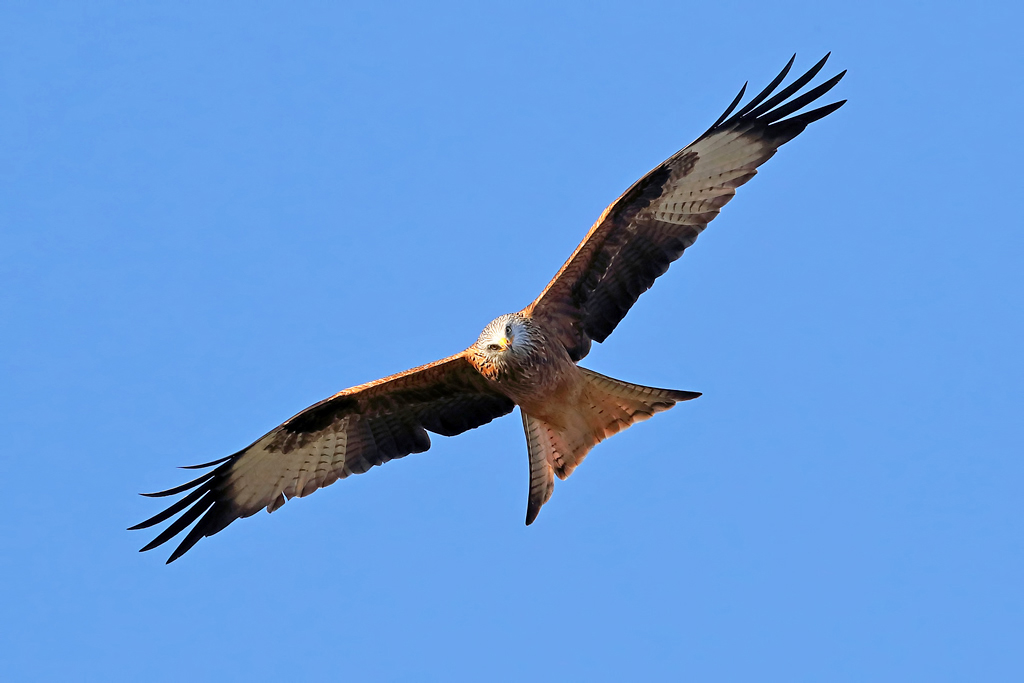
Red Kites are very popular they have brownish-red feathers and a forked tail
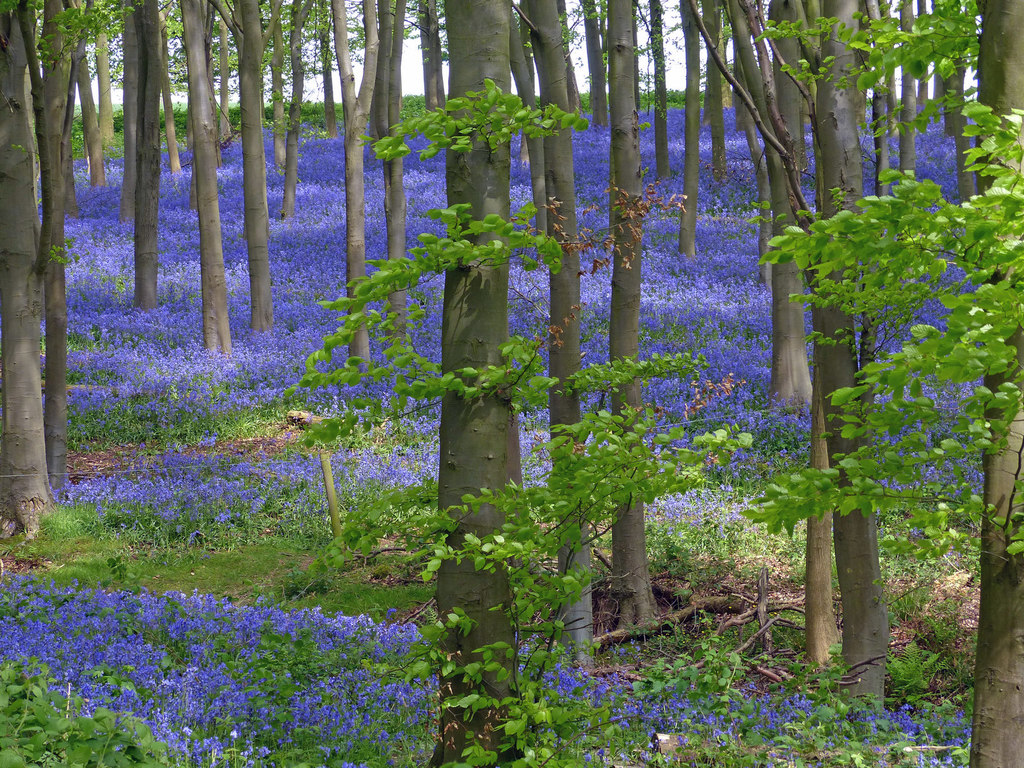
A carpet of bluebells - it is as if the whole of the woods have been covered in a blue carpet

Puffins are funny looking birds that are black and white with orange webbed feet and a big stripy beak
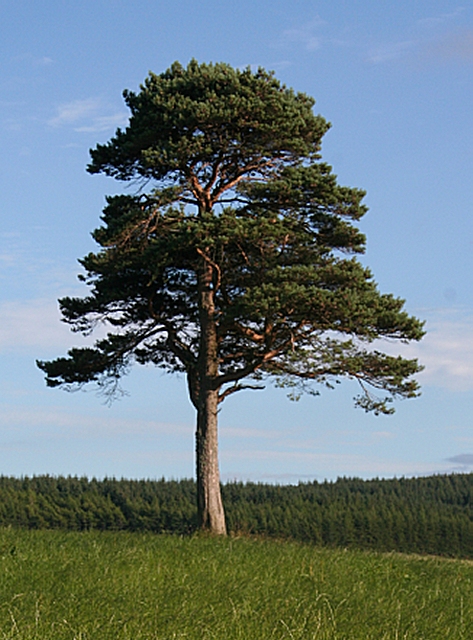
Scotts Pine are a conifer with a tall bare trunk with the branches and needles at the top of the tree
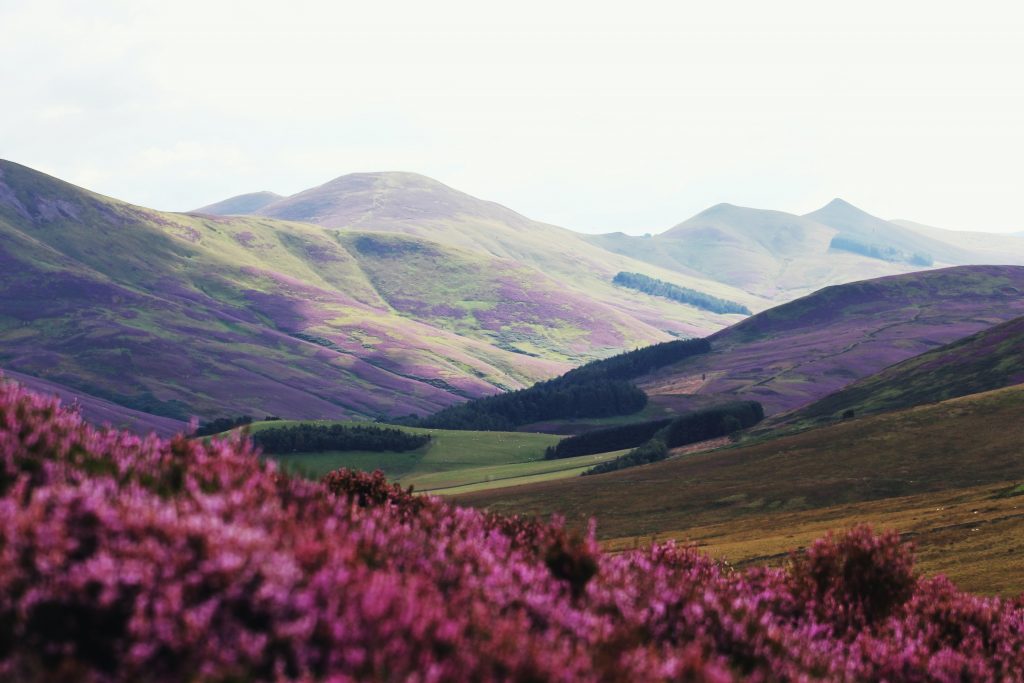
Heather is a shrub with a purple or white flower which can be beautiful when it is blooming
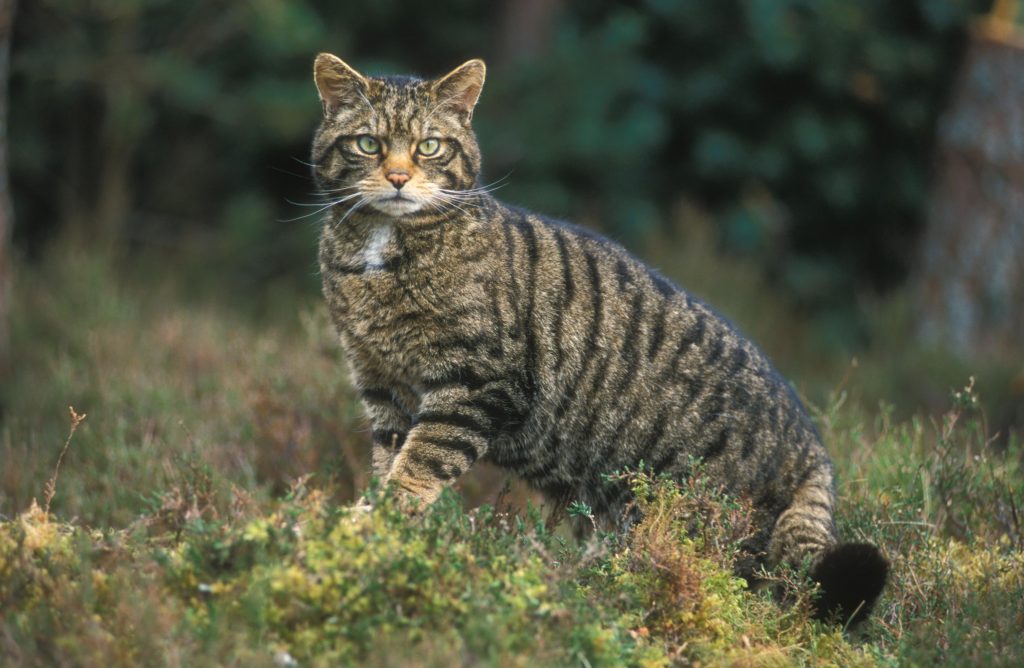
Scottish Wild Cats are now very rare - they look like grey and black striped tabby cats
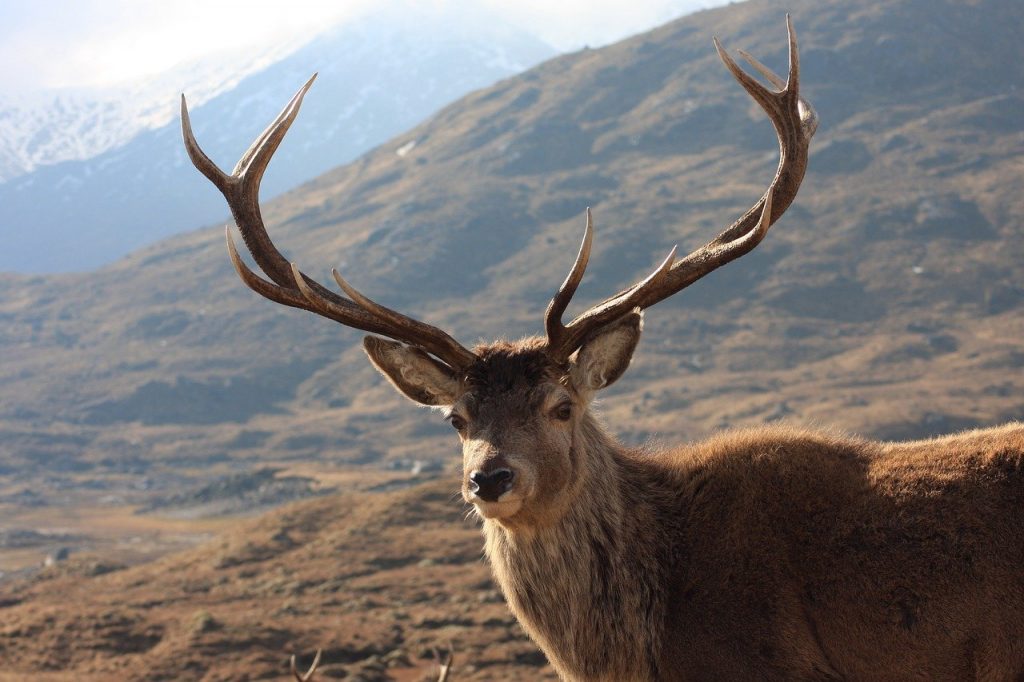
Red Deer are reddish brown and the males have impressive horns
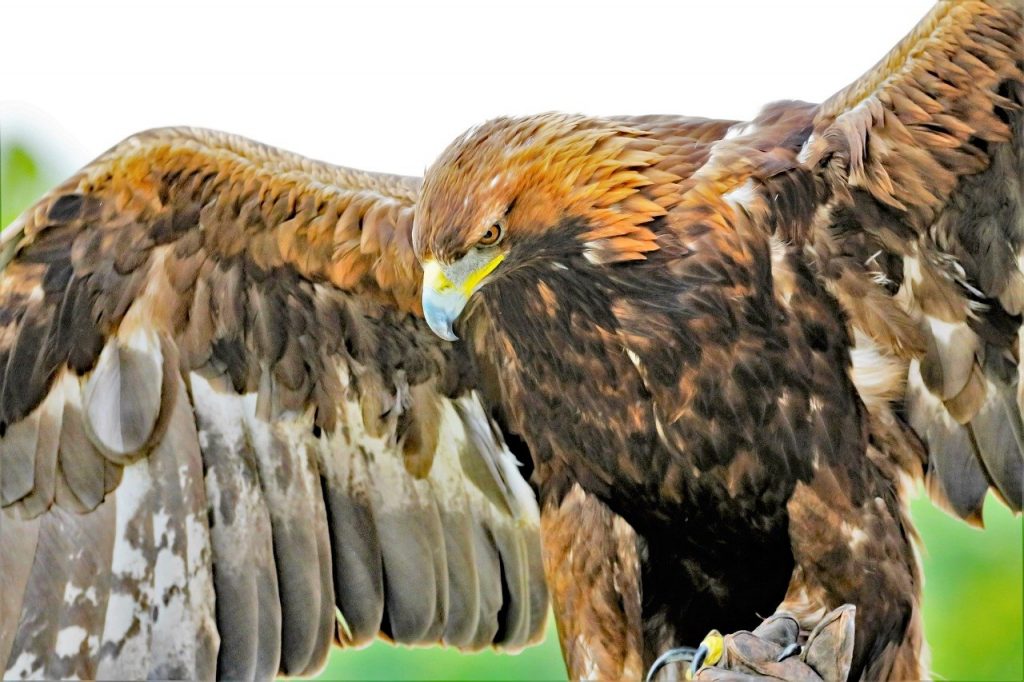
Golden Eagles are found in Scotland and they are the U.K.s largest Bird of Prey
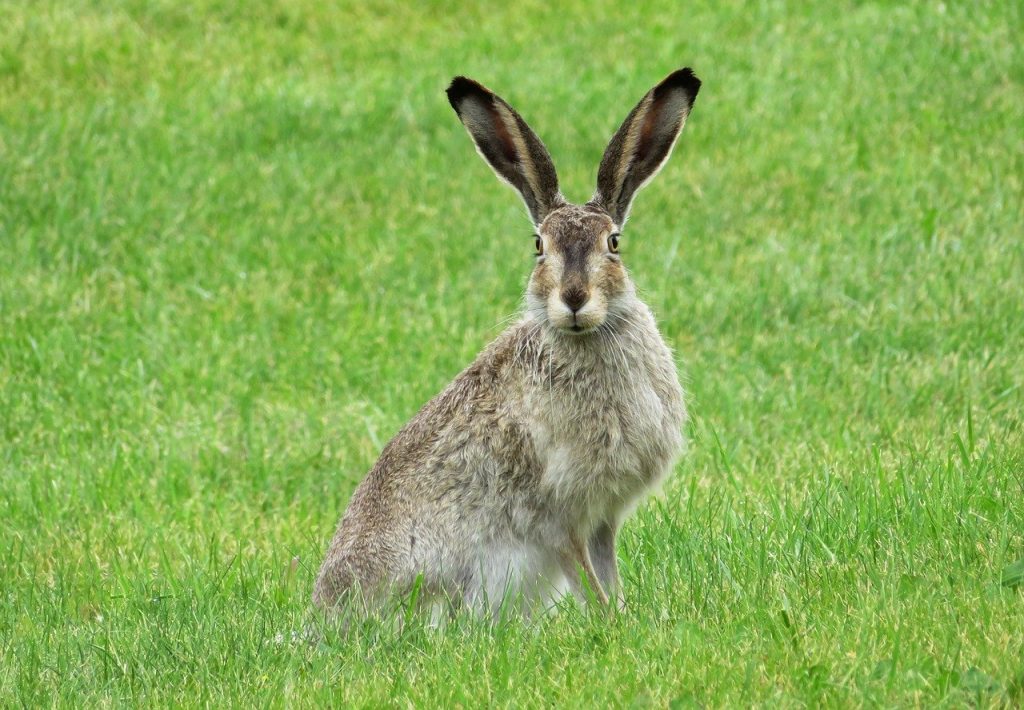
Brown Hares have recovered in parts of Shropshire after the countryside was closed down because of Foot and Mouth disease in cows
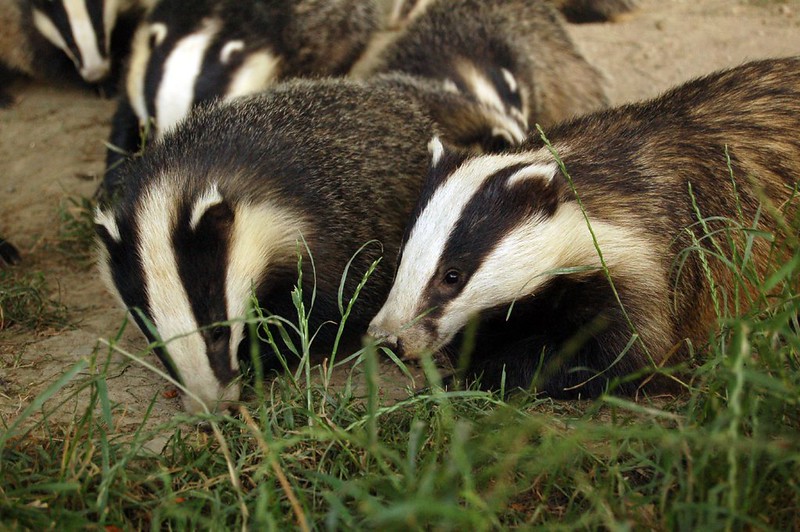
In the past badgers were a very common sight in Shropshire
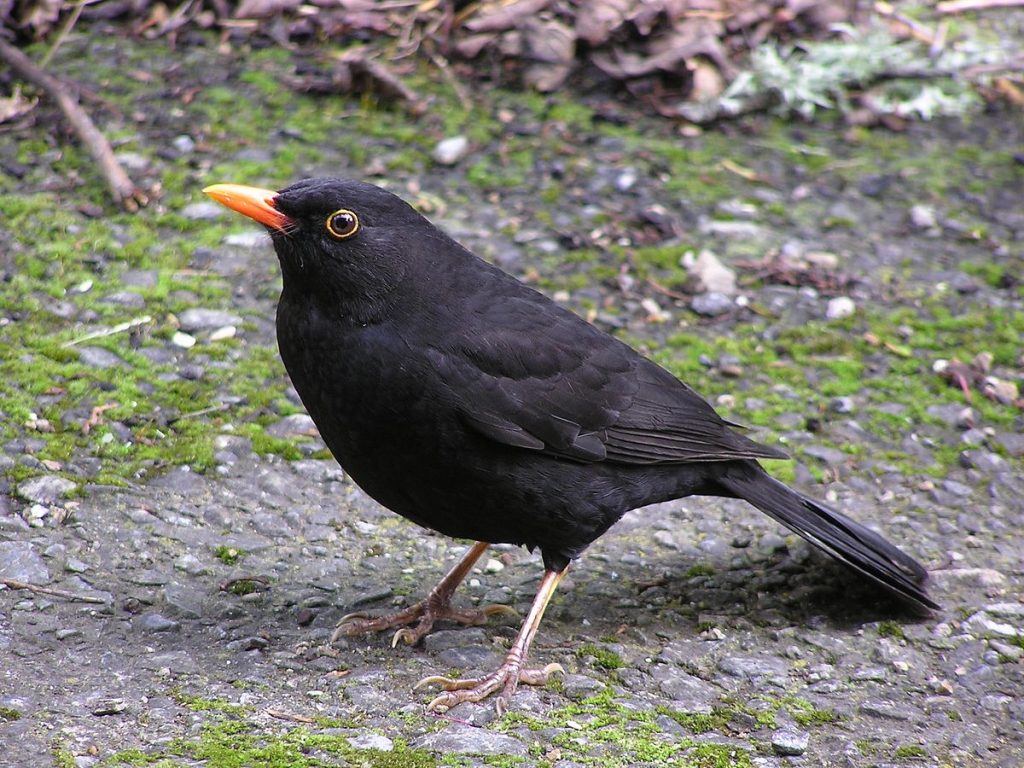
Male blackbirds are black, but females are brown
Sparrows are endangered but there appears to be plenty around in Yorkshire
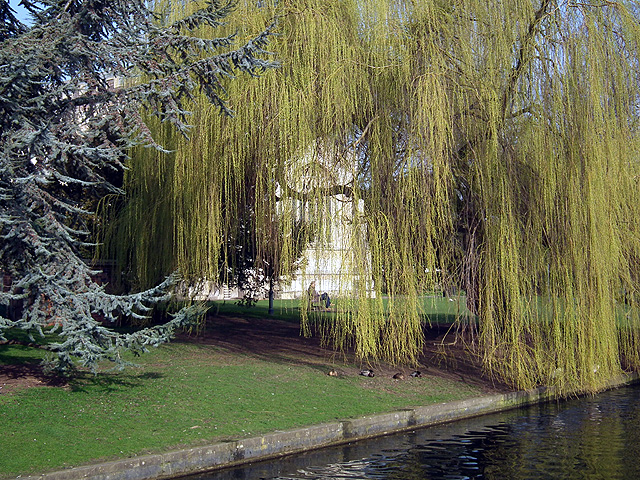
A weeping willow with branches hanging down so that it almost looks like its crying
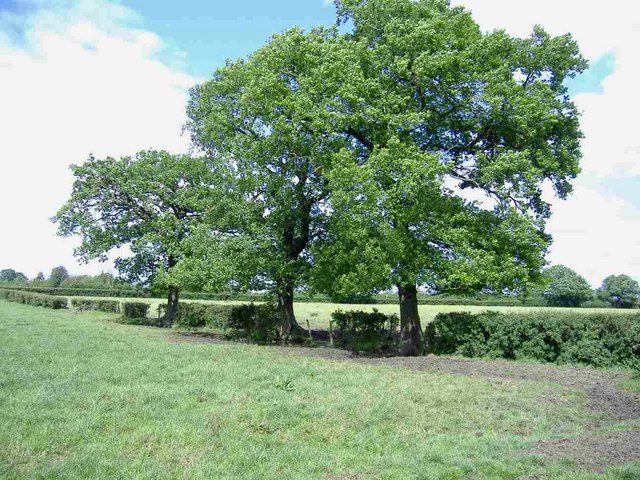
Oak Trees once covered large parts go the UK

Barn owls can sometimes be seen hunting in daylight in snowy weather

Goldfinch are beautiful gold coloured birds with a red, white and black face

Foxes are now regular visitors to towns and cities
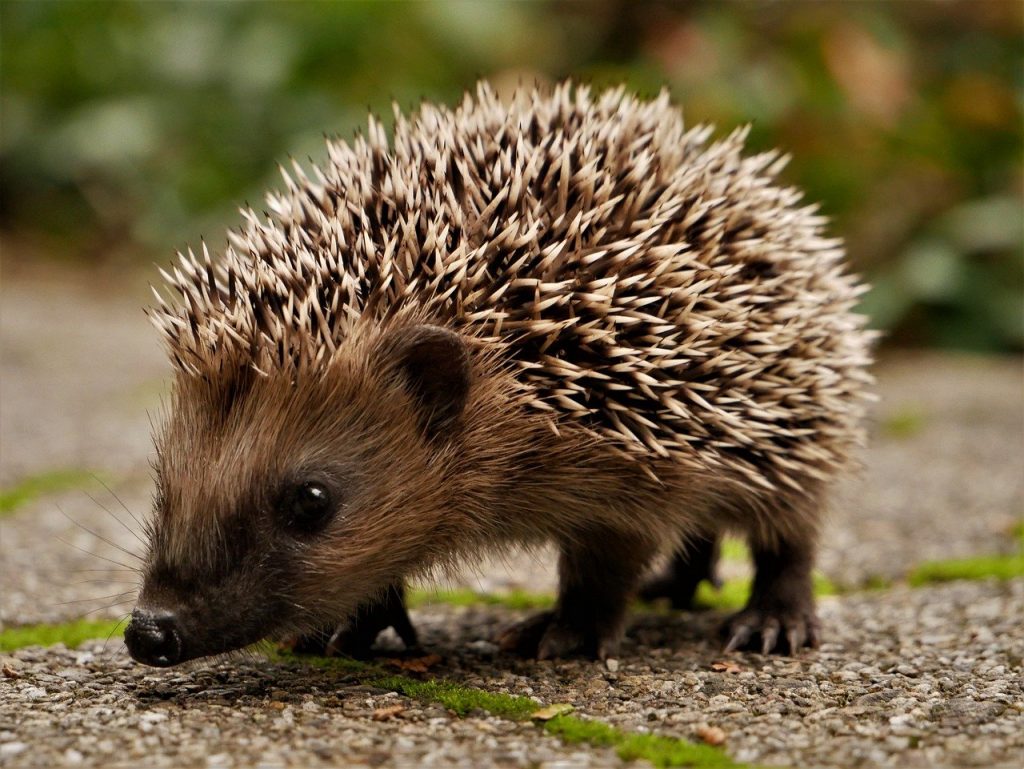
A hedgehog has spikes on its back and rolls itself up in a ball for protection
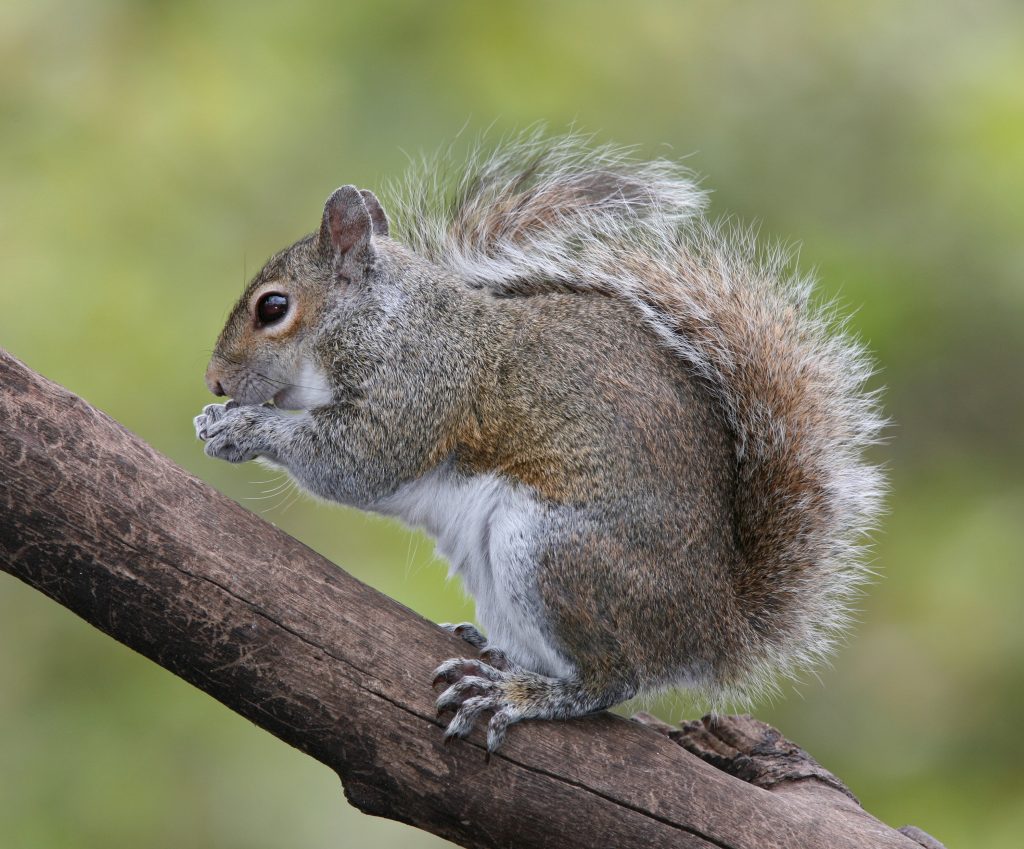
A grey squirrel is mouse-like with a bushy tail
